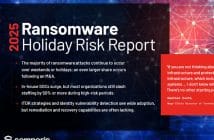
Cyber security spending increased globally by 30 per cent from 2017 to 2020, with Australians spending approximately A$5.6 billion on cyber security from both local and international providers, a figure that is forecast to increase toA$7.6 billion by 2024, according to the 2020 Update to Australia’s Cyber Security Competitiveness Plan (SCP).
Despite the global growth, startups headquartered in Australia have generated less value in early-stage funding rounds in each of the last three years than those headquartered in Singapore, Canada or the UK. 2019 also experienced the largest fall in cyber sector growth since 2013 and has been in steady decline since 2016 (Figure 29).
CEO of AustCyber, Michelle Price said, “The aim of the Cyber Security Sector Competitiveness Plan is to provide the economic evidence base for the cyber security industry across business, research and consumer segments to drive growth in the ecosystem, increase exports of Australian solutions, and support Australia to become the leading global centre for cyber security education.
While the pandemic is having an economic impact on Australia’s cyber security providers, it has accelerated digitisation trends and driven unprecedented domestic demand for cyber security. Trust in digital infrastructures and the data they carry is the mainstay of recovery from the pandemic – but also the means to drive productivity and effective diversification of the economy’s base.
There are now approximately 26,500 workers employed in full time cyber security roles, with 88 per cent of providers having fewer than 100 employees. New South Wales hosts the largest and most diverse range of cyber security providers in Australia, with more than 80 cyber security providers headquartered in NSW. 75 per cent of these service the financial services sector and extending their involvement to bourgeoning technologies, such as advanced manufacturing and automation.
The gross value added (GVA) of Australia’s cyber security sector can be estimated, at $2.3 billion. The cyber security sector’s GVA remains much lower than comparable digital sectors such as computer software ($4.2 billion) and retail e-commerce ($3.2 billion).
“While GVA estimates the direct contribution of cyber security to the economy, it does not account for its role in enabling economic activity in other sectors, of which it plays a critical role,” said Ms. Price.
Key statistics from the Update:
- At least US$147 billion was spent on direct cyber security products and services globally in the last year
- The gross value added of Australia’s cyber security sector is approximately A$2.3 billion
- 43% of cyber security businesses are exporting globally
- 26,500 workers are employed in cyber security in Australia
- There are now at least 350 sovereign cyber security providers in Australia
- Australians spent approximately A$5.6 billion on cyber security from local and international providers in the last year
- Australian cyber security providers generated A$3.6 billion in revenue – A$3 billion from the domestic market and A$600 million from international markets
- Most of the businesses in Australia’s cyber security sector are young – 40% are under five years old and 66% are less than ten years old
- Collaboration in the sector is very high – 33–44% of startups partner on product and service delivery solutions
- Like most businesses, cyber security providers are having to change how they operate – 51% report this as an effect of COVID-19





